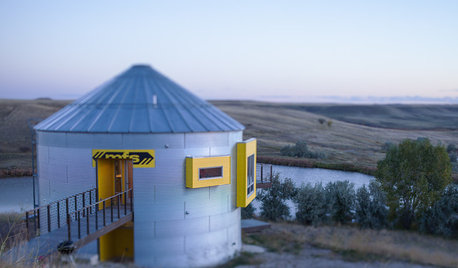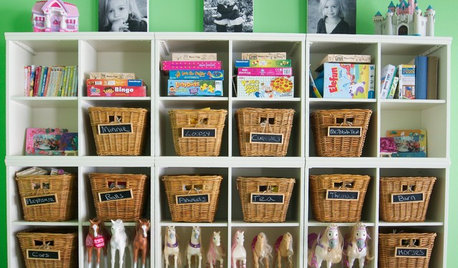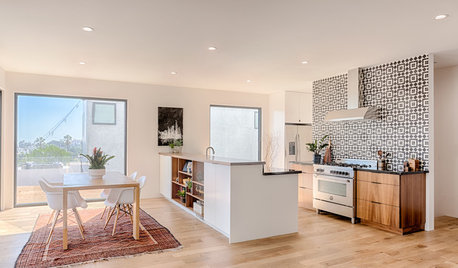planning design for new indoor bin
scarletdawn
12 years ago
Related Stories

HOUZZ TOURSHouzz Tour: Prairie Grain Bin Turned Bucolic Retirement Home
An agrarian structure and a big dream combine in this one-of-a-kind home that celebrates 250 acres of Montana grasslands
Full Story
GARDENING GUIDESHouzz TV: Make a Worm Bin for Rich Soil and Happy Plants
A worm-powered compost bin that can fit under a sink turns food scraps into a powerful amendment for your garden. Here’s how to make one
Full Story
DECLUTTERINGTame the Toy Chaos: Bin Storage for All
New project for a new year: With bins, totes and shelves, a clutter-free playroom can be yours
Full Story
KITCHEN DESIGNHow to Plan a Kitchen That Extends Outside
Indoor-outdoor living gets easier with kitchen designs that bridge the divide
Full Story
ARCHITECTUREOpen Plan Not Your Thing? Try ‘Broken Plan’
This modern spin on open-plan living offers greater privacy while retaining a sense of flow
Full Story
KITCHEN OF THE WEEKKitchen of the Week: Where Indoor and Outdoor Living Meet
A remodel of a 1923 Florida kitchen adds a large island, bold color and a connection to a new outdoor cooking and dining space
Full Story
HOUSEPLANTS8 Essentials for Healthy Indoor Plants
Houseplants add so much to our homes — and can thrive when grown in the right conditions. Keep these tips in mind
Full Story
KITCHEN LAYOUTSSleek Kitchen Design Highlights the Views
An open-plan design and large windows put the focus on the downtown Los Angeles skyline
Full Story
GREAT HOME PROJECTSHow to Add an Indoor or Outdoor Ramp
Improve accessibility and safety by swapping stairs for ramps in your home or yard
Full StoryPOOLSRoom of the Day: An Indoor Pool Laps Up the Attention
This modern addition blends Scandinavian and coastal Californian design
Full StorySponsored
More Discussions






fam62cc
ColesvilleEd
Related Professionals
Parole Landscape Architects & Landscape Designers · Salem Landscape Architects & Landscape Designers · Maple Valley Landscape Contractors · Battle Ground Landscape Contractors · Garland Landscape Contractors · Lemoore Landscape Contractors · Little Ferry Landscape Contractors · Pleasant Prairie Landscape Contractors · Rockland Landscape Contractors · Tustin Landscape Contractors · Vermilion Landscape Contractors · El Monte General Contractors · Fredonia General Contractors · Mountain View General Contractors · Waianae General Contractorsplumiebear
plumiebear
scarletdawnOriginal Author